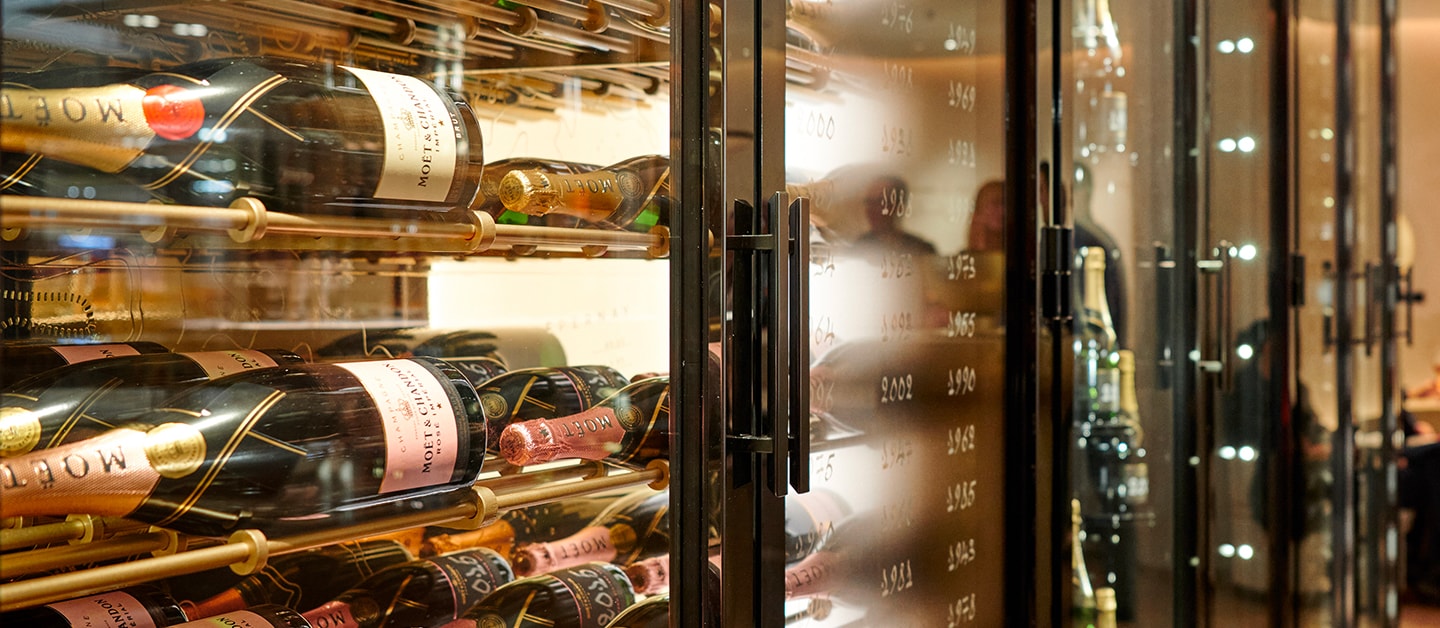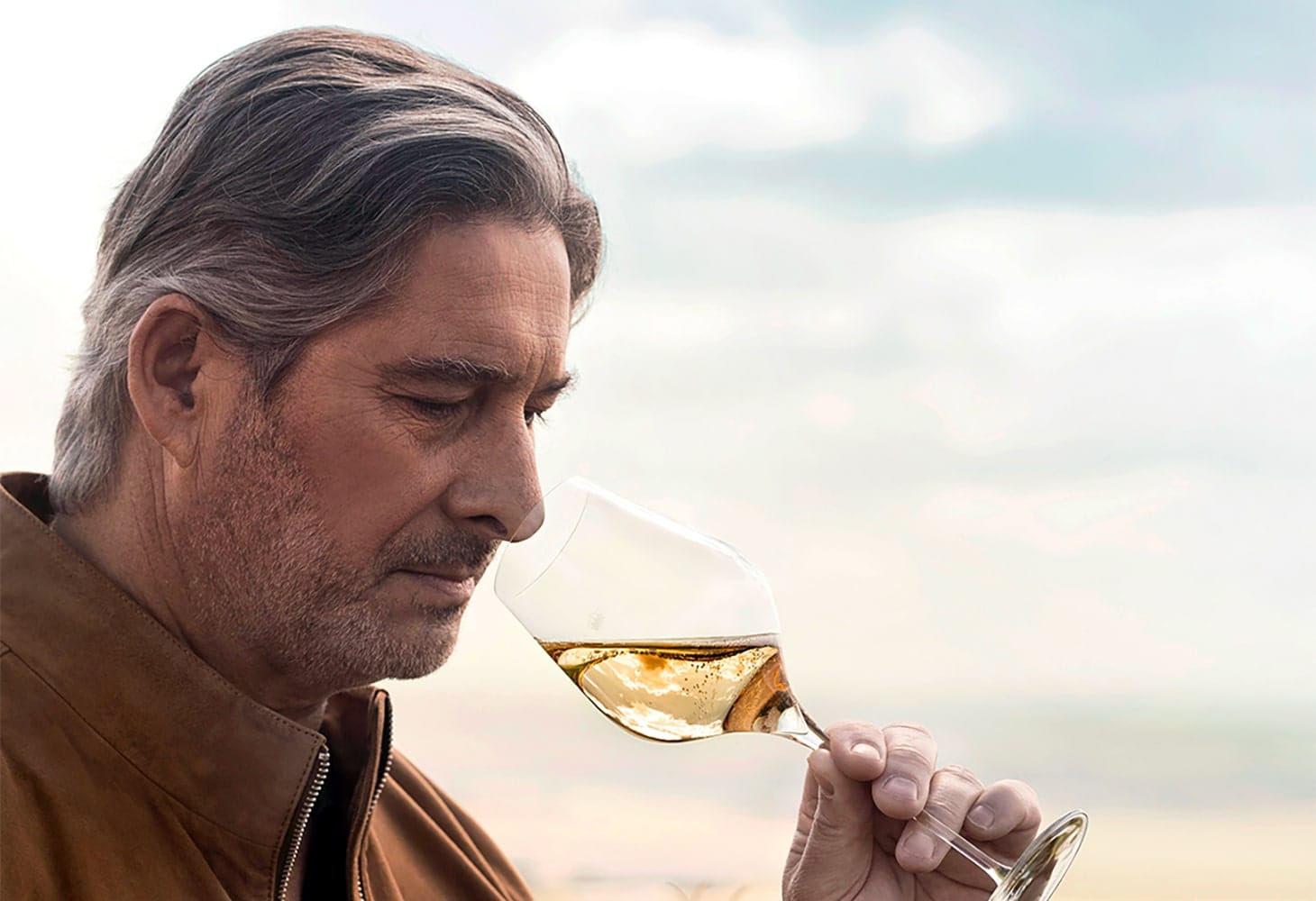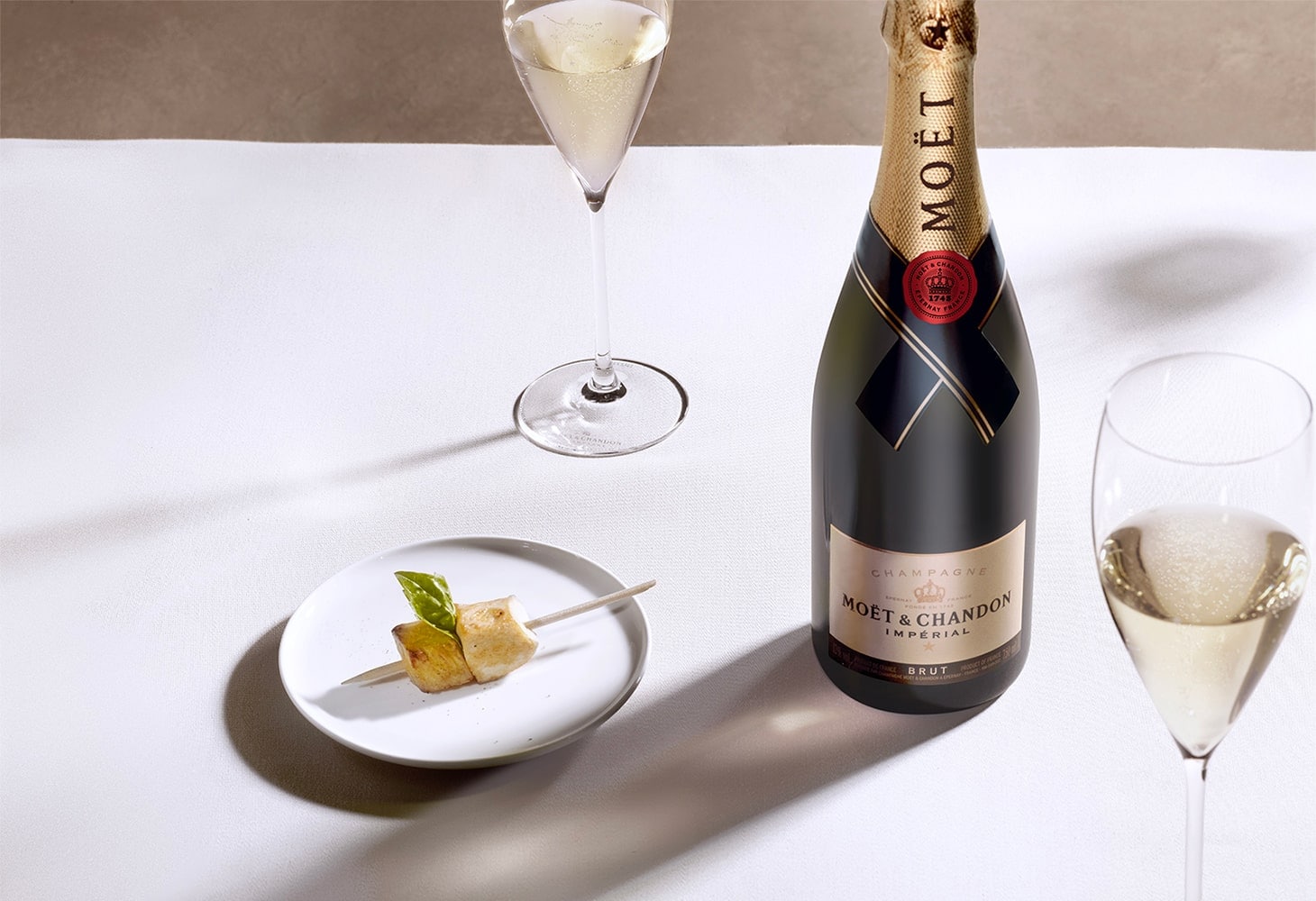Storing & opening
How to store your bottle of champagne?
STORING TEMPERATURE: Keep bottles within the following temperature range : 45 - 65°F / 7 - 18°C
AVOID THERMAL SHOCK: Keep the temperature cool and constant. High temperatures speed up the ageing process and damage the quality of the wine. Cold temperatures slow down the development of the Champagne and prevent it from taking on more complexity.
LIGHT AND HEAT: Do not expose Champagne bottles to light or heat. Champagne is particularly sensitive to light. Transparent glass bottles must be especially well protected.
HUMIDITY: Maintaining a humidity level above 70% helps to preserve the cork's physical and elastic qualities. Very low humidity and high temperatures can dry out the cork and cause rapid wine transformation.
AVOID SHOCKS: Handle with care to prevent the bottle from becoming brittle. There are 6 to 8 bars of pressure inside the bottle, which is three times higher than the pressure in a car tire. Please keep your bottles on a smooth surface.
All our Champagnes contain sulphites.


Aging and opening guidelines
In addition to storage conditions, which have a direct impact on the quality of the wine and how it develops, the blends (vintage or non-vintage) it contains, as well as the shape of the bottle also determine how the champagne develops as time goes by.

Aging potential of Champagne
In good storage conditions, our non-vintage bottles can be stored up to 3 years once on the market.
Please also note that half bottles age quicker than bottles, and that magnums age more slowly than bottles, so for long-term keeping they are a better choice. We usually recommend opening bottles of non-vintage brut:
- < 75CL : 12 and 18 months after release from the cellar
- 75CL : Up to 24 months after release from the cellar
- > 150CL : Up to 36 months after release from the cellar
Ageing Champagne longer is possible with our vintages. In good storage conditions, they can be stored up to 7 to 10 years after purchase (or even more), depending on the vintage.
There is no benefit in keeping champagne longer than the recommended time. All the bottles of champagne that we sell have been aged in our cellars and they can be opened as soon as they are purchased.
Keeping bottles longer may bring about changes in taste (more pronounced), colour (darker) and effervescence (less). In addition, the cuvées will probably develop differently from the one our oenologists wanted to convey.

How to open your Champagne bottle
Champagne is a sparkling wine under pressure. Bottles should be handled with care.
Do not saber the bottle
Here are the recommended steps:
Step 1: Ensure the bottle is at the ideal serving temperature.
Step 2: If the bottle is damp, wipe it with a cloth.
Step 3: On a stable surface, remove the part of the foil that covers the wire cage and the cork.
Step 4: Loosen the wire cage while holding the cap with your thumb.
Step 5: Tilt the bottle at a 45° angle, avoiding pointing it towards yourself or a guest. Step 6: While firmly holding the cork with one hand with your thumb on the cap, rotate the base of the bottle to gently extract the cork without letting it escape.
Specific precautions for bottles from the Jeroboam 3L format:
Ensure that these bottles have spent at least the last 24 hours before opening in an upright position.
Large bottles will be easier to handle when placed directly on a flat, stable surface.
While firmly holding the cork with one hand with your thumb on the cap, grasp the neck of the bottle with the other hand to perform a slow and controlled rotation of the bottle until you feel the cork detach from the inner side of the bottle neck.
While firmly holding the cork, control its exit in line with the bottle to prevent any sudden expulsion or breakage of the upper part of the cork.


